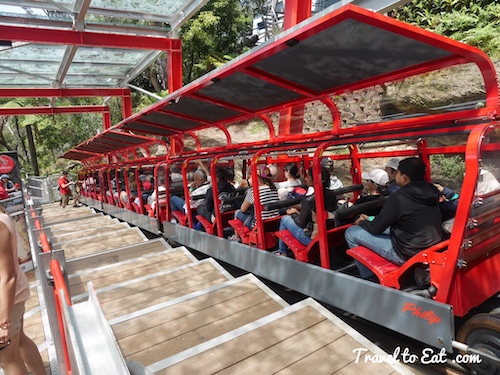
We decided to visit the rainforest valley floor as part of our tour at “Scenic World” via the incline railway and to return via the gondola. The incline railway, designed by Sydney civil engineer, Norman Selfe, was initially built with twin tracks and was completed in 1882. It passed through a natural tunnel in a slot existing in the cliff face between Orphan Rock and the present site of the tourist center.. A substantial amount of rock blasting was necessary to provide a uniform grade (average of 44°) from the cliff top 200m down to the valley some 30m below the outcrop of the Katoomba coal seam. Travellers on the Scenic Railway, the world’s steepest funicular railway, pass down through, and alongside, sandstone and shale of the Triassic period (between 250 and 205 million years ago) and down to the coal seams and more shale and sandstone of the Permian Period (300 to 250 million years ago). These rocks are all older than the time of the dinosaurs, which was the Jurassic Period.
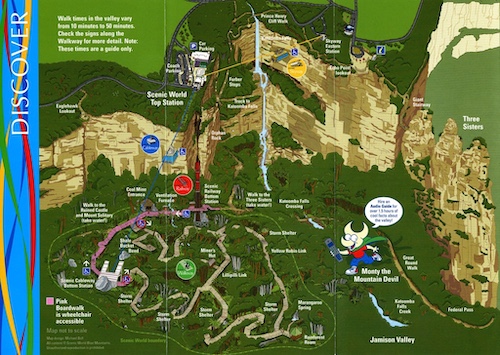
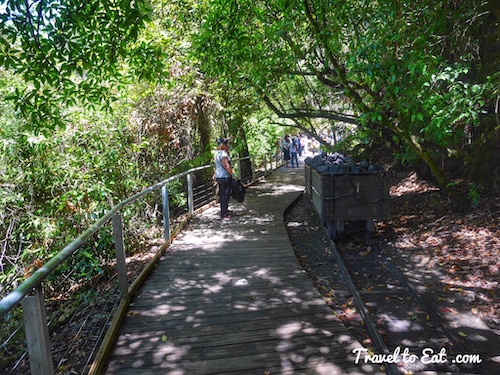
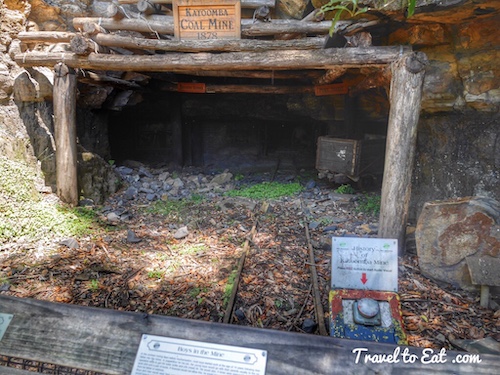

The incline (Scenic Railway) was built in the early 1880s to convey coal to the cliff top from a mine in the Katoomba Seam. The outcrops occur just below the base of the sandstone cliffs that are such a distinctive feature of the Blue Mountains. The coal mine was established by John Britty North who arrived in Katoomba sometime in the early 1870’s. In 1878 he registered the company “The Katoomba Coal Mine”. One of his first ventures was to extract an approximately 200 kg block of coal, have it man-handled up the 200m high escarpment, and then displayed at the 1879 International Exhibition in Sydney. Based on the sample it is believed he was awarded a Government contract to supply coal to the NSW Railways. Coal is formed from the accumulation, compression and alteration of plant matter over along period of time. However, between about 60 meters and 80 meters below the Katoomba Seam are seams of another coal-like material, not formed from plant matter but from a great thickness of algae. This amazing material, which looks like a modern plastic, is called Torbanite, or more commonly oil-shale. In the area below the Katoomba Colliery workings, the Torbanite, which frequently occurred in lens-like deposits, was not thick enough or of good enough quality to be mined. However, about 3 Kms to the southwest, beneath the Narrow Neck peninsula, was mined some of the richest Torbanite found anywhere in the world, producing up to 500 liters of kerosene oil per ton of shale. Pieces of Torbanite are scattered all over the hillside below the mine site because the material mined beneath the Narrow Neck peninsula between about 1888 and 1897 was transported to the top of the escarpment via the incline (Scenic Railway). The material was then carried to the Great Western Railway at what is now known as Shell Corner. About 40 coal mines were in this area at any given time.
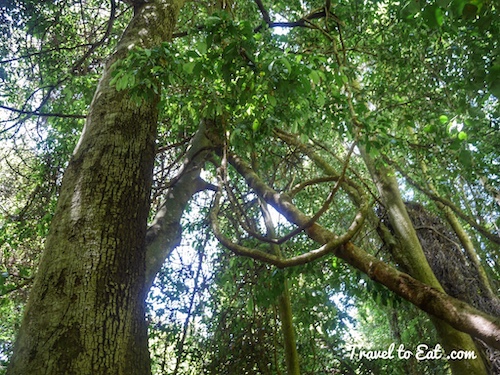


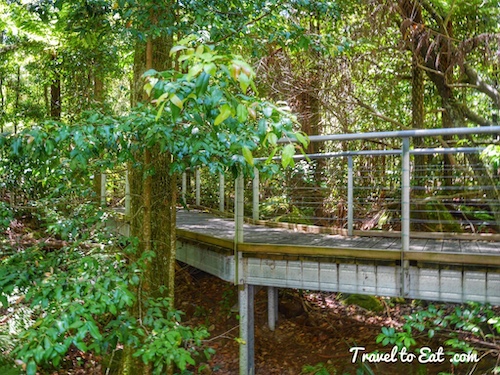
Wind and lightning are the greatest enemies of the trees in this rainforest. This vine intertwines with most of the canopy of this temperate rainforest. It serves to strengthen the canopy as a whole and protect it from wind damage, as it ties the tops of the individual trees together to provide a uniform front and a stronger combination than individual trees can provide. Rainforest in the Blue Mountains only occurs where there is protection from drying westerly winds. Below the high cliffs and in the deep canyons grow specialized trees and plants. Plants in the rainforest have greener, softer leaves than those of the dry forest on the ridgetops, and enjoy a steady supply of water available in the soil.Tall trees limit the amount of light available to grow plants on the forest floor. Specialized plants like the water vine solve this problem by winding around and climbing the trees to grow their leaves in the canopy.This vine has bunches of blue/black berries in spring.
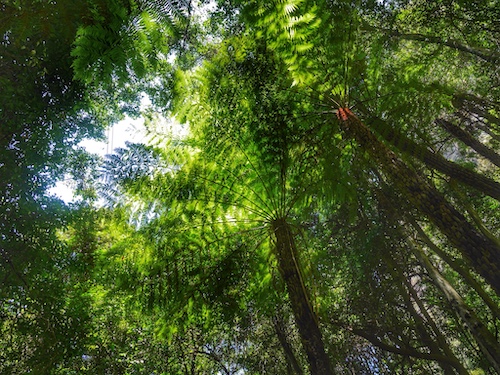

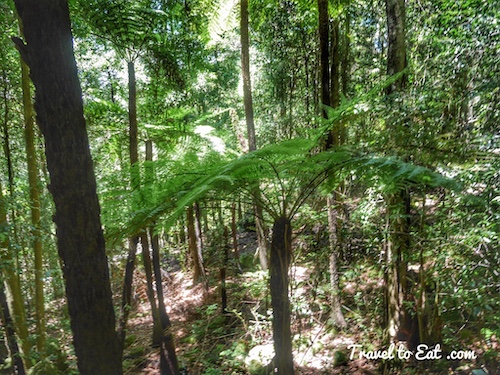
Cyathea australis, also known as the Rough Tree Fern, is a species of tree fern native to southeastern Queensland, New South Wales and southern Victoria in Australia, as well as Tasmania and Norfolk Island. It grows in moist shady forest, both coastal and montane, at an altitude of up to 1280 m, often in the company of Dicksonia antarctica. Ferns have no seeds – but they do have other reproductive structures. At certain times of the year small brown areas develop on the underside of the fronds. These small capsules contain large numbers of tiny spores, and when they are ripe, they open and release the spores into the air. Spores are microscopic and simpler than seeds; many are no more than a single cell with a wall around it. There is no embryonic plant inside. When spores fall into a moist shady place, they germinate to form a flat little plant barely one centimeter across. This is called the prothallus. It does not even look like a fern until it germinates itself by producing its own sex cells or gametes. This is called a gametophyte.Tree ferns are unusual because they have a stout vertical trunk which actually gets wider towards the top. They grow soft fronds which unroll from the top. Aboriginals would eat this soft fern center as a good supply of starch.
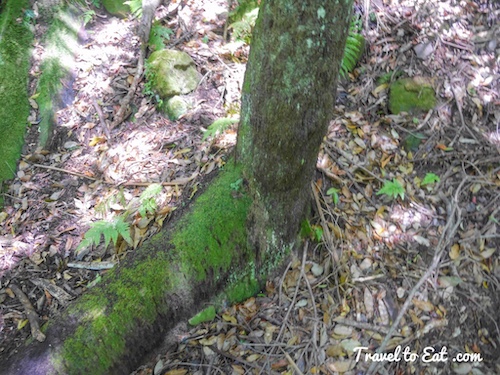
Tree ferns have an unusual structure.The trunk is covered in the adventitous root system of the plant, which can become active if they come in contact with soil. This fern is unusual in that it fell down and then began to grow vertically. Notice how the rootlets are facing down on the fallen over section of the trunk. The growing node of the plant is at the center of the fronds.
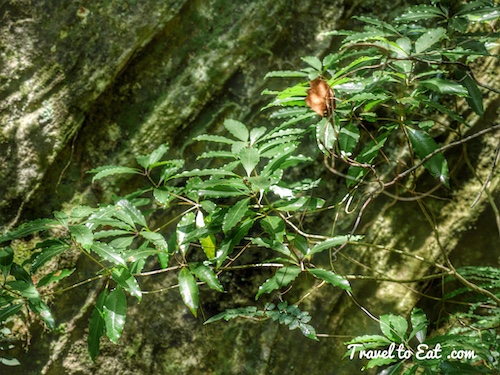
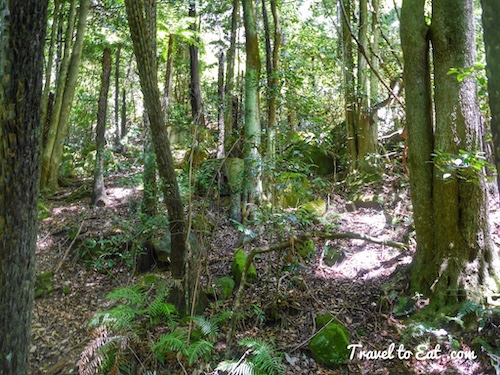
Doryphora sassafras is one of the dominant species in the Blue Mountains rainforest. The leaves are coarsely toothed and flowers are white star shapes in clusters of three. Both the leaves and bark smell strongly. Doryphora sassafras can grow to a height of 25-35 meters. It is a straight-trunked tree generally with a small crown, its grey-brown trunk reaching a diameter of 1.2 m (4 ft). Sassfras (Doryphora sassafras) and Lilli Pilli (Acmena smithii) are two trees that demonstrate how two quite different trees can evolve to occupy exactly the same niche in the environment, grow at the same rate, and gain mutual support from growing so closely together. You can see them growing together in the photo above.
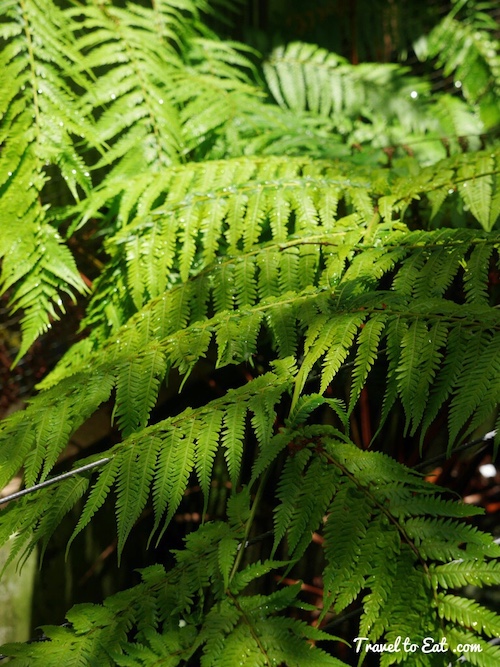
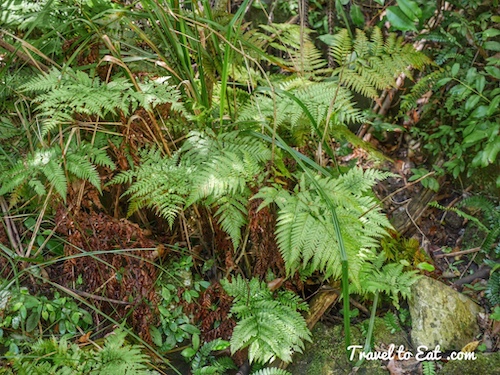
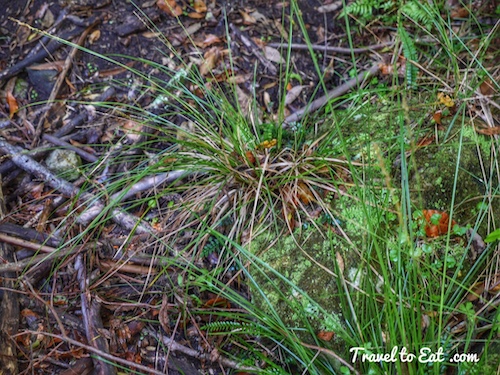

There are an innumerable number of species of ferns in this rain forest. Protected by the rainforest canopy, the walkway has its own microclimate which can be quite distinct from the weather at the top of the hill. If you have a chance, visit the rainforest of Scenic World.
[mappress mapid=”78″]
References:
Scenic World: http://www.scenicworld.com.au/
Sassafras: http://en.m.wikipedia.org/wiki/Doryphora_sassafras

